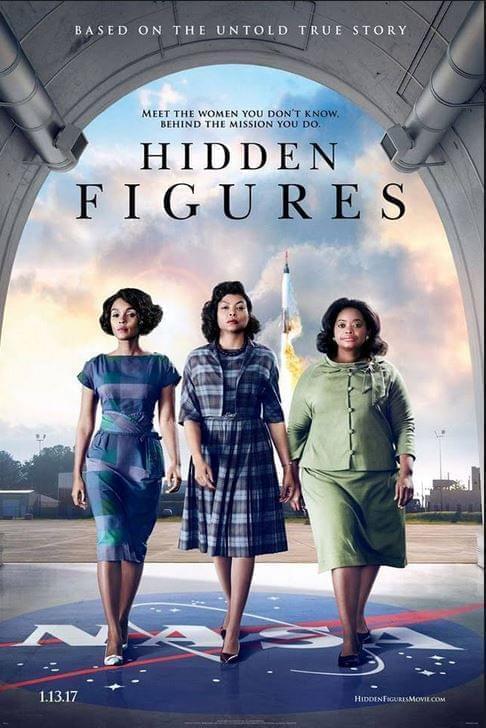Making Hidden Figures Visible: Learning more about the African-American women of NASA

This weekend I had the pleasure of having a girls’ night out with my daughter and one of her best friends. It’s not often that just she and I get to hang out without her father and brother, so it was much needed! We went to see the movies to see Hidden Figures. This movie was inspiring, empowering, and gave us a chuckle with the comedic lines sprinkled throughout the movie. The movie chronicles the lives and work of three African-American women who worked for NASA during the 60’s. Katherine Johnson, a research mathematician, Dorothy Vaughan, mathematician and head of the National Advisory Committee for Aeronautics’ (NACA’s) segregated West Area Computing Unit and Mary Jackson, aeronautical engineer.
Their stories made us reflect on the contributions of women, and in this case, women of color, in our American history. I did have a bit of sadness that came over me because my daughter asked me why I haven’t taught her about their stories. I simply looked in her eyes and told her that I was not taught about their stories either and that this is why it is important for us to see movies like this− that help bring light to those - hidden figures. After the movie, the girls had many questions about the people, NASA projects, and missions that were referenced in the film. I knew a good place to start with providing them additional resources was through PBS Learning Media.
PBS Learning Media has a lot of content that can help provide educational resources as a follow up for the film. There are many things that could drive conversations about the movie as well. There are pictures of astronaut John Glenn and his first space mission with Mercury 6. This is a major focus of the film. Apparently, Glenn - would not take off without Katherine Johnson confirming the coordinates for the mission. The girls and I also talked about the different roles that everyone played in the movie: from Katherine Johnson calculating the formulas, Dorothy Vaughan running the first IBM machine for NASA, and Mary Jackson helping to build the actual spaceship and becoming the first African-American female engineer for NASA. All their positions played a role in the missions that John Glenn and his fellow astronauts partook in and they helped pave the way for other future space missions. As we talked about everyone’s role, I thought sharing a short clip on Space Careers would be a helpful tool to help them understand the various positions and careers within NASA and a space mission.
Lastly, it was important to me that I highlighted a few other African-American women and their work with NASA. Many of us have heard of Mae Jemison, the first African-American women in space, but not many of us know about some of the younger generation of women scientists that play a major role in NASA testing and development. To highlight a few of them, I shared the stories of Tracy Drain, flight systems engineer and Dr. Ayana Howard, a NASA roboticist.
